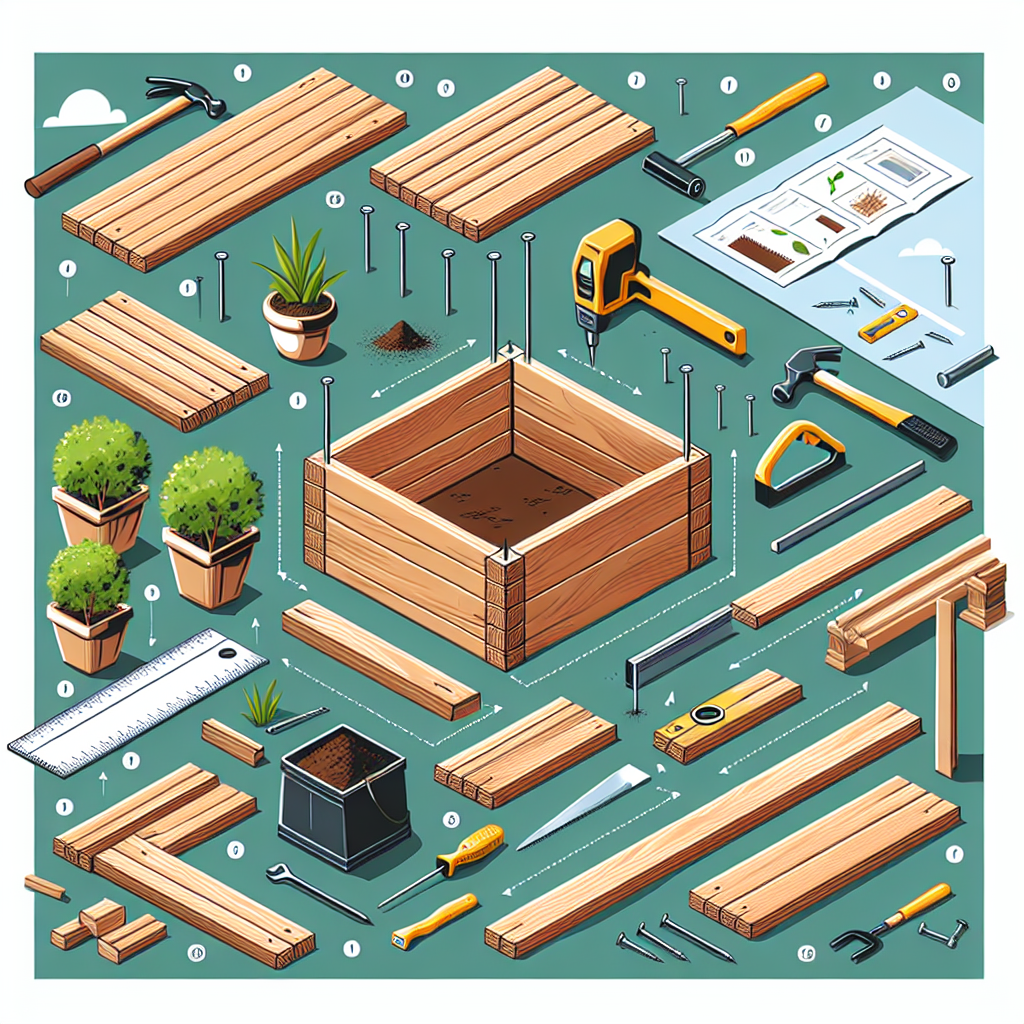
How to build a garden box
Introduction: The Joy of Gardening
Gardening is a fulfilling and rewarding hobby that allows you to connect with nature, grow your own food, and beautify your surroundings. One popular way to start gardening, especially for beginners, is to create a garden box. This simple structure can maximize your gardening space while minimizing weeds and pests. In this article, we’ll walk you through the essential steps and considerations for how to build a garden box.
Benefits of a Garden Box
Before diving into the construction process, let's explore the advantages of using a garden box.
- Space Optimization: Garden boxes allow you to utilize small spaces effectively, making them ideal for patios and balconies.
- Improved Soil Quality: You have complete control over the soil and compost used, ensuring optimal growing conditions for your plants.
- Pest Control: Raised garden boxes can deter certain pests and reduce the issue of weeds, giving your plants a better chance to thrive.
- Accessibility: Elevated garden boxes can make gardening easier for individuals with mobility challenges.
Choosing the Right Location
The first step in building your garden box is selecting an appropriate location. Here are a few factors to consider:
- Sunlight: Most vegetables and flowers require at least 6-8 hours of direct sunlight each day. Ensure your chosen spot gets plenty of light.
- Proximity to Water: Positioning your garden box near a water source can make regular maintenance simpler.
- Level Ground: A flat area will give your garden box stability and prevent any drainage issues.
Materials You'll Need
Before you start building, gather the necessary materials for your garden box. Here is a basic checklist:
- Wood (cedar or redwood is recommended for durability)
- Screws (rust-resistant)
- Wood screws or brackets
- Landscaping fabric (to prevent weeds)
- Soil and compost mix
- Optional: wood sealant to protect against moisture
Step-by-Step Instructions on How to Build a Garden Box
Now that you have your materials and a chosen location, let’s break down the steps to create your garden box.
Step 1: Determine the Size of Your Garden Box
The size of your garden box will depend on the available space and what you intend to plant. A standard dimension is 4 feet by 4 feet, which allows easy access from all sides. However, you can adjust the dimensions based on your needs. A general rule is to keep the width no more than 4 feet to ensure you can reach the center without stepping into the box.
Step 2: Cut Your Lumber
Using your saw, cut the wood into the appropriate lengths. For a simple rectangular box, you will need:
- Two pieces for the length (e.g., 4 feet each)
- Two pieces for the width (e.g., 4 feet each)
- Optional: additional pieces to create a second level, if desired
Step 3: Assemble the Box
Begin assembling the box by laying the pieces together to form a rectangle. Secure the corners with screws or brackets to ensure stability. It’s essential to pre-drill your holes to prevent the wood from splitting.
Step 4: Add Support (Optional)
If you want to ensure additional durability, consider adding a central support beam, especially for larger boxes. This extra piece will prevent warping and add stability.
Step 5: Install Landscaping Fabric
Before placing the soil, line the bottom of your garden box with landscaping fabric. This material will help manage weeds while allowing water to drain efficiently.
Step 6: Fill with Soil
Now it’s time to fill your box with soil. A mix of topsoil, compost, and organic matter will provide your plants with the nutrients they need. A common ratio is one-third topsoil, one-third compost, and one-third planting mix.
Step 7: Plant Your Garden
Once your soil is in place, you can start planting! Choose vegetables, herbs, or flowers based on your preferences. Be sure to follow the planting guidelines for spacing and depth. A good tip is to consider companion planting to maximize your garden's potential.
Maintenance Tips for Your Garden Box
After building your garden box and planting your garden, regular maintenance is crucial for success. Here are some tips to keep things thriving:
- Water regularly, especially during dry spells.
- Mulch around plants to maintain moisture and suppress weeds.
- Check for pests regularly and take appropriate action to manage any infestations.
- Rotate your crops each season to promote soil health.
- Fertilize your plants periodically to encourage robust growth.
Seasonal Considerations for Your Garden Box
Gardening is a year-round endeavor. Here is what to consider for different seasons:
- Spring: It’s time to plant! Prepare your soil and select early-blooming plants.
- Summer: Keep an eye out for pests and diseases, and ensure plants receive enough water.
- Fall: Harvest your crops, and consider planting cover crops to improve soil health for winter.
- Winter: Depending on your climate, protect your garden box from harsh winter weather with mulch or by covering it with fabric.
Conclusion: Enjoy the Fruits of Your Labor
Creating a garden box is a straightforward yet rewarding project that can significantly enhance your gardening experience. By focusing on the right materials, location, and maintenance, you can cultivate a thriving garden that provides beauty, enjoyment, and possibly even fresh produce right at your doorstep. Now that you have the knowledge and steps outlined, you can confidently start on your journey of how to build a garden box and immerse yourself in the joys of gardening!
“Gardening adds years to your life and life to your years.” - Unknown
Additional Resources
If you're looking to deepen your understanding of gardening and explore more creative ideas, check out these resources:
- Local gardening clubs and workshops
- Books and online courses on organic gardening
- Gardening blogs and forums for community support and advice
By Guest, Published on August 11th, 2024